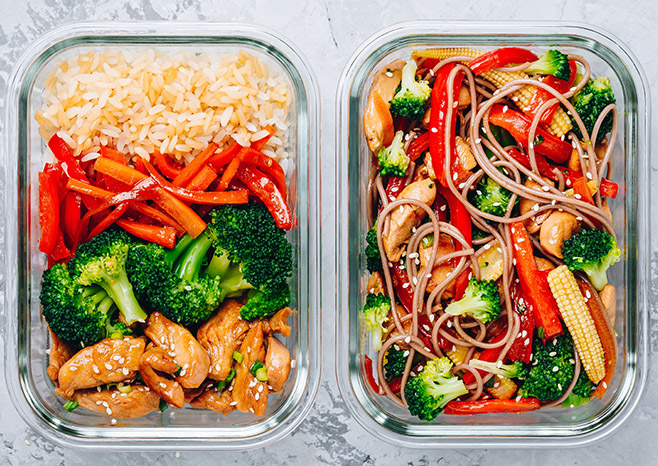
Portions vs. Servings: Tips for Portion Distortion
If you’re someone who’s trying to lose weight or maintain a healthy size, you know how important it is eat healthfully. But what is considered healthy regarding portions versus servings can be confusing.
Let’s start by defining each. A serving is the standardized amount of food recommended on package labels or in consumer resources, such as food group guidelines found in government health materials. A portion, on the other hand, is the amount of food you choose to eat, which may be less or more than the serving size.
Over the past 40 years, serving sizes of everything from soft drinks to sandwiches have increased substantially. On average, people are consuming 250 more calories per day than they were in the 1970s, when a single-serve bottle of Pepsi was 6 ounces. Now it’s 20 ounces! Most restaurant entrées are enough for two or even three people. These increased serving sizes have been cited by nutrition experts as the cause of the obesity epidemic in America. It’s gotten to the point where today’s “supersize” portions are distorting our idea of what a “normal” serving size is, and it’s hurting our health.
Studies have shown that if given more, people will eat more, regardless of whether or not they are still hungry. This is why taking control of your portions, regardless of what you are served, is critical to managing your weight. Remember these tips to help you keep portion sizes in check, whether you’re at home or at a restaurant.
1. Downsize your dinnerware. Use smaller plates or bowls for meals or snacks and it will look like you have more food.
2. Use your hand as a guide. The size of your palm is roughly the size of a 3–4 ounce piece of meat or fish. Your thumb is about a tablespoon. Your fist equals about a 1/2 cup.
3. Automatically reduce your portion size at a restaurant by asking for a half-order or immediately boxing up 50% of your plate to go when it arrives.
4. Eat slowly. It takes your brain 20 minutes to register being full, so take your time and you’ll eat less.
5. Don’t eat straight from the package. Put chips, nuts, crackers, or sweets into specific-sized bowls that only hold a certain amount so you don’t overdo it.
Regardless of your weight management goals, they’ll be much easier to manage when you pay attention to the food you eat and how to measure it. Understanding the difference between servings and portions will make it that much easier.




